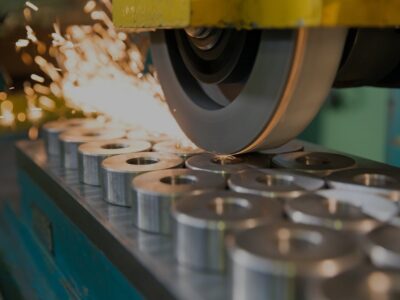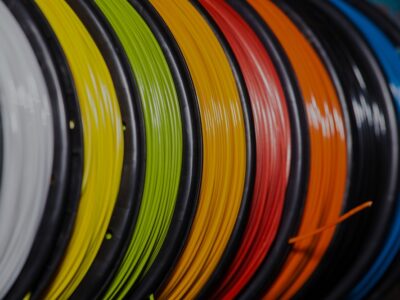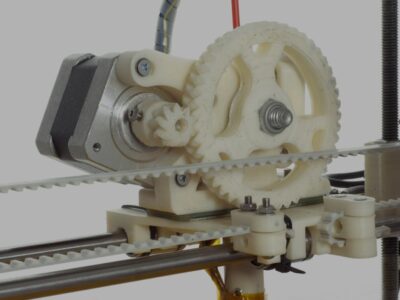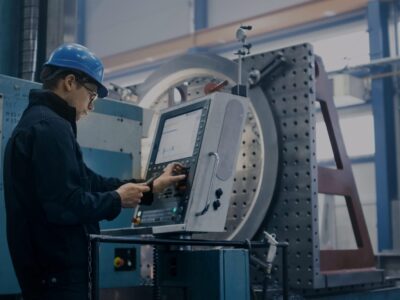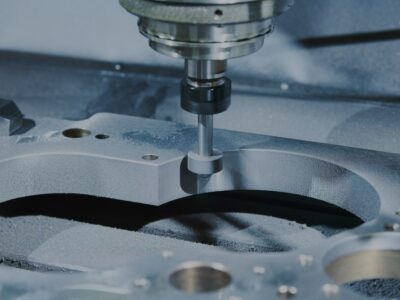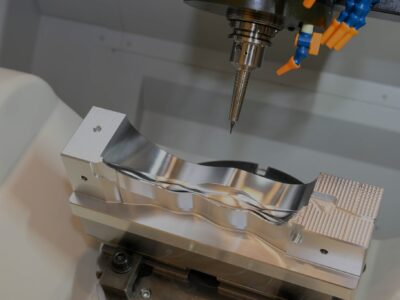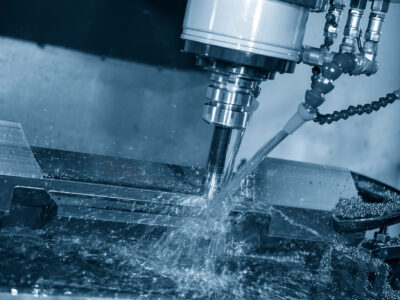Originally published on fastradius.com on November 18, 2021
Traditional metal surface finishing is the process of using an abrasive paste, wool berets, and polishing sponges to finish the surface of a metal part or component after it has been machined. The goal of polishing is to remove scratches, nicks, and other surface defects created during the machining process, while also improving the shine and appearance of the surface.
However, polishing metal parts serves more than a purely aesthetic purpose. Many metal surfaces will tarnish with time, typically as a result of exposure to oxygen, high temperatures, and use. The reflective surface achieved through metal polishing not only improves the aesthetics of the part, but helps to prevent contamination caused by corrosion, oxidation, and other forms of quality degradation.
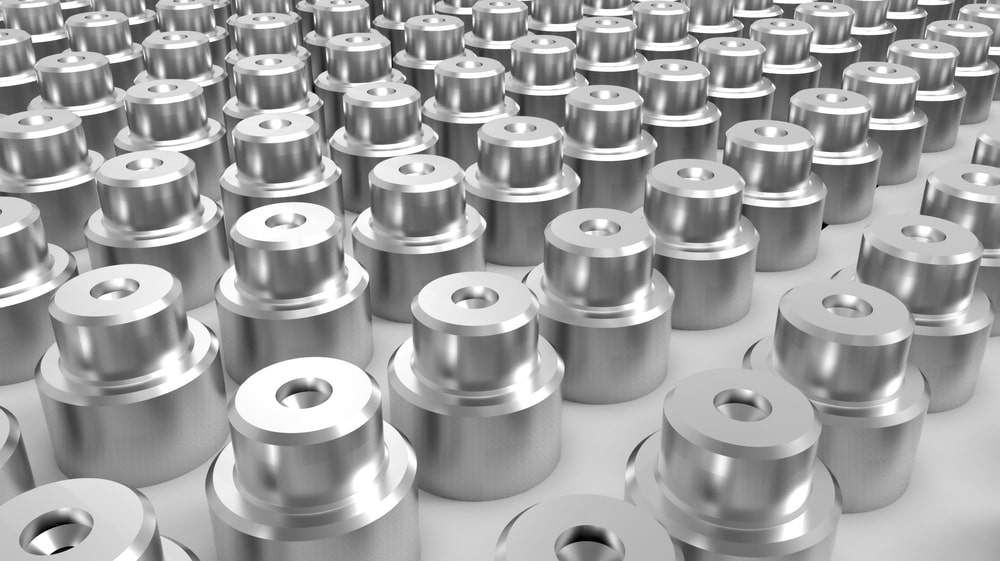
There are three primary types of metal polishing in use today — mechanical, chemical, and electropolishing — and each offers advantages and drawbacks that must be taken into consideration. If you’re not sure of the differences between these three metal surface finishing techniques, or which one is best suited for your project, this article will help.
Mechanical polishing
The mechanical polishing process involves using physical tools and abrasives to remove grinding lines, scratches, pits, and other flaws from the metal surface. Common materials used include abrasive media, flat wheels, sandpaper, wool berets, polishing sponges, and more. For ultra-precise polishing, turntables capable of high-speed rotation and other specialized auxiliary tools may be necessary. Sometimes manufacturers use mechanical polishing as a preliminary step before electropolishing.
While mechanical polishing is precise and produces high-quality surface finishes, it is a specialized process that requires a skilled and knowledgeable technician in order to achieve the best results.
Chemical polishing
In contrast to mechanical polishing, the chemical polishing process obtains a smooth surface finish by immersing the workpiece in a chemical solution, which dissolves surface layers of the metal. This process smoothes and polishes micro-roughnesses on the workpiece’s surface, leaving behind a mirror-like finish free of burrs, vapor stains, and microscopic particles. Chemical polishing results in the formation of passivation layers, meaning that the metal is so free of debris and convex surface defects that it can be considered frictionless.
Electropolishing
The electropolishing process is similar to chemical polishing in that the part or component is immersed in a chemical solution. The key difference is that electropolishing applies an electric current to the workpiece’s surface that dissolves its metal ions into the electrolytic medium. The addition of an electric current allows for greater control over the amount of surface metal removed, which can be as little as microns of material.
Electropolishing is also an ideal fit for processing fragile parts or those with complex geometries that may be difficult to polish through other means. The process also produces passivation layers on the surface of the metal.
Pros and cons of metal surface finishing techniques
Mechanical polishing produces superior surface finishes with high brightness and aesthetic appearance. Surfaces that have been mechanically polished are also typically easier to clean. However, mechanical polishing is highly labor-intensive, can’t be used with fragile or complex parts, and may produce inconsistent or short-lived gloss if not performed properly. Mechanically polished parts are also more susceptible to corrosion.
Chemical polishing, on the other hand, can be used to polish workpieces and components with complicated shapes. It’s a highly efficient process, allowing for multiple workpieces to be polished simultaneously, and typically requires less investment in specialized equipment.
Chemical polish produces good corrosion resistance but can lead to inconsistent brightness across the surface of the workpiece. The chemical polishing solution can also be hard to heat to the proper temperature, is difficult to adjust and regenerate, and may emit harmful substances as part of the process.
Electrochemical polishing creates a smooth, bright, and long-lasting luster that is resistant to corrosion and wear and has consistent coloration throughout the part. Electrochemical polishing is low pollution and low cost but typically involves large equipment investment and additional, complex steps before the process can be performed.
If you’re trying to weigh the pros and cons of electropolishing vs mechanical polishing, there are a few things to keep in mind. Due to its speed and affordability, electropolishing is more often used for rapid prototyping. Polished metal that goes through the electropolishing process is highly lustrous, which makes it easier to visually identify any remaining surface defects. While mechanical polishing can achieve extremely high-resolution surface finishes, doing so is labor-intensive and requires highly skilled operators.
In addition, mechanically polished parts may not be usable in high-purity applications, as abrasives and other compounds may become embedded within the material of the part, which can also negatively impact the workpiece’s mechanical strength. Physical and chemical methods of polishing can result in the impregnation of particles or other contaminants in the surface, which limits cleanliness. The criterion for cleanliness is dependent on the application, but this can be a significant drawback for mechanical and chemical polishing. In applications where cleanliness is critical, like medical devices, electropolishing is often preferable for this reason.
Get started with metal surface finishing
Metal surface finishing techniques help ensure that workpieces and part components have strong, lustrous surfaces that are free of imperfections. Mechanical, chemical, and electrochemical polishing processes have different benefits and drawbacks, so it’s critical that product teams choose the right technique for a given project. SyBridge Technologies brings extensive experience to the table, including guidance and insight into choosing the best metal polishing finish for your parts. Contact us today to get started.
